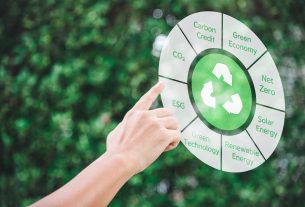The editor’s choice for our December issue is “Elevated CO2 alleviates adverse effects of drought on plant water relations and photosynthesis: A global meta-analysis” by Zhaoguo Wang, et al. Here, Associate Editor Alessio Collalti and colleague Paulina F. Puchi discuss the importance of this research:
The rapid increase of atmospheric CO2 concentration has caused an increment in temperature, leading to an increase in the frequency and intensity of extreme drought events. During drought (D), a common plant response mechanism to water scarcity is to reduce, and even to close, the stomata to reduce water loss. However, because of a reduction in CO2 availability in the chloroplast, due to a reduced stomatal conductance (gs) (when water leaves from the stomata CO2 enters), this mechanism may lead to a reduction of photosynthesis (A) and whole-plant growth. The ratio of water used in plant metabolism, to water lost through transpiration, is known as Water Use Efficiency (WUEplant). However, some studies show the opposite pattern – is this a sign that plants may perform different Water Use (WUE) strategies under drought events?
Some studies suggest that elevated CO2 (eCO2) concentration can lead to a reduction of stomatal conductance, reducing water consumption (i.e. transpiration), causing a “water saving effect”, and leading to higher soil water content and an increase in A because of the ‘CO2 fertilization effect’. However, this effect can be constrained to some extent under drought.
In their paper, Wang and colleagues presented a comprehensive meta-analytic review based on data from 226 papers published from 1983 to 2022, from Free Air CO2 Experiments and growth/chamber greenhouse studies for a large suite of plant traits, plant functional types, and growth conditions. Notably, their work aims to assess the effect eCO2 and drought (combined or not) and their interaction on physiological mechanisms (increasing or reducing WUE), photosynthesis, biomass production and allocation in C3 and C4 plants.
The main findings were that the interaction of eCO2 and drought did not increase water soil availability. In other words, there was no significant ”water saving effect”. Instead, this interaction slowed down soil water depletion due to the reduction of stomatal transpiration, but there was an increase in Water Use Efficiency because of an increase in A, consistent with optimal stomatal behavior. Unfortunately, eCO2-induced enhancement in WUE decreased from the leaf to whole-plant level, while prolonged drought strongly and negatively affected the biomass (both as above- and below-ground and total) and carbon allocation (Figure 1).
This meta-analysis builds on previous empirical findings and model simulations and shows that A and gs are regulated to keep the Ci:Ca (i.e. intercellular vs. atmospheric CO2 concentration) constant in response to eCO2, regardless of soil water availability. This suggests that eCO2 enhances the increase in intrinsic Water Use Efficiency (iWUE = A/gs), alleviating adverse effects during drought events on photosynthesis, but not at the same level in C3 and C4 plants (and with broad differences within the same functional group). Interestingly, the authors also found that the interaction between drought and eCO2 on plants hardly changed with experimental factors such as drought manipulation type, experimental protocol, growth condition, and drought duration.
Wang et al.’s work provides us with a better understanding of plant responses to rising atmospheric CO2 and future drought events. These findings are crucial to the prediction of plant growth trajectories and carbon feedback under future global changes.

